



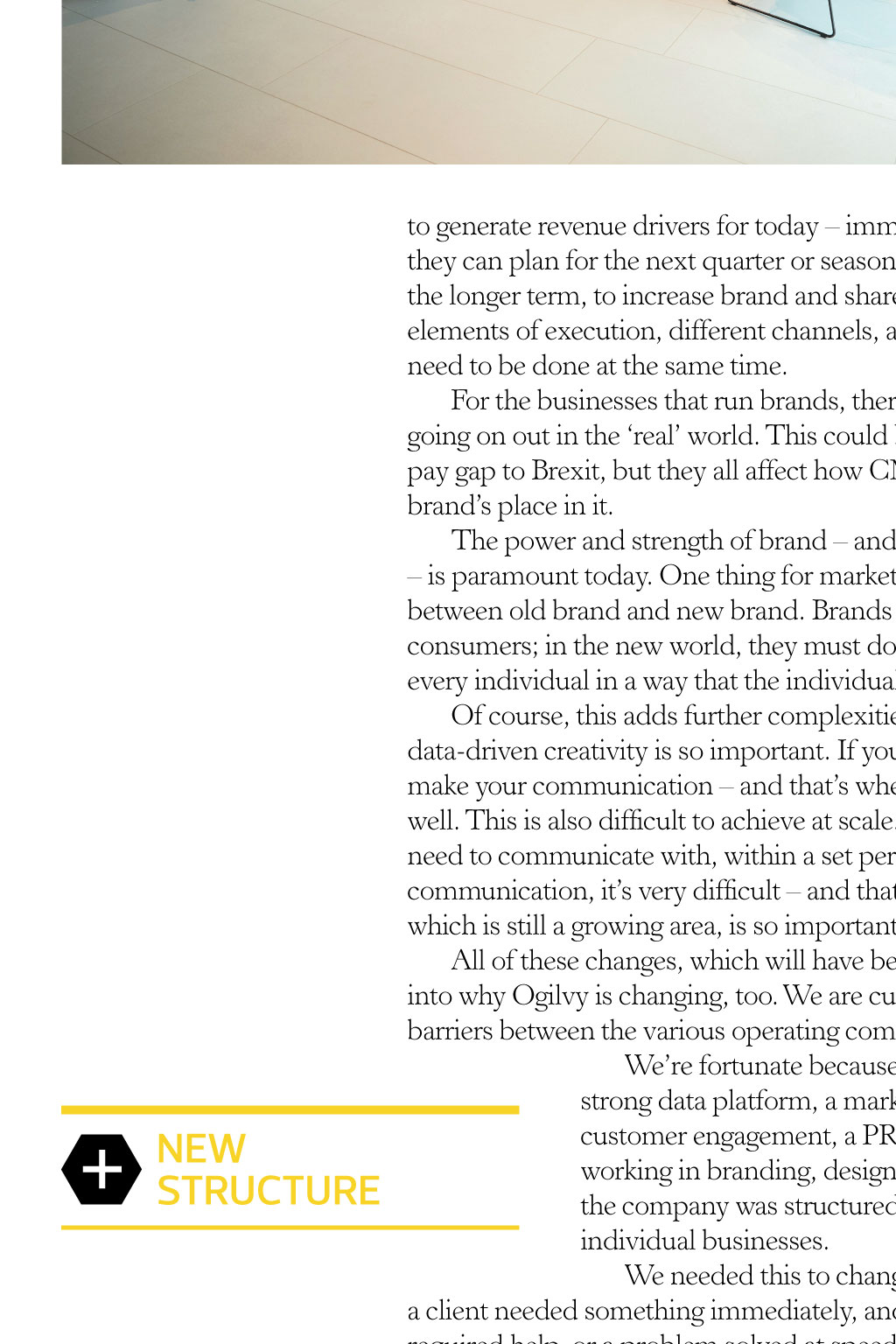
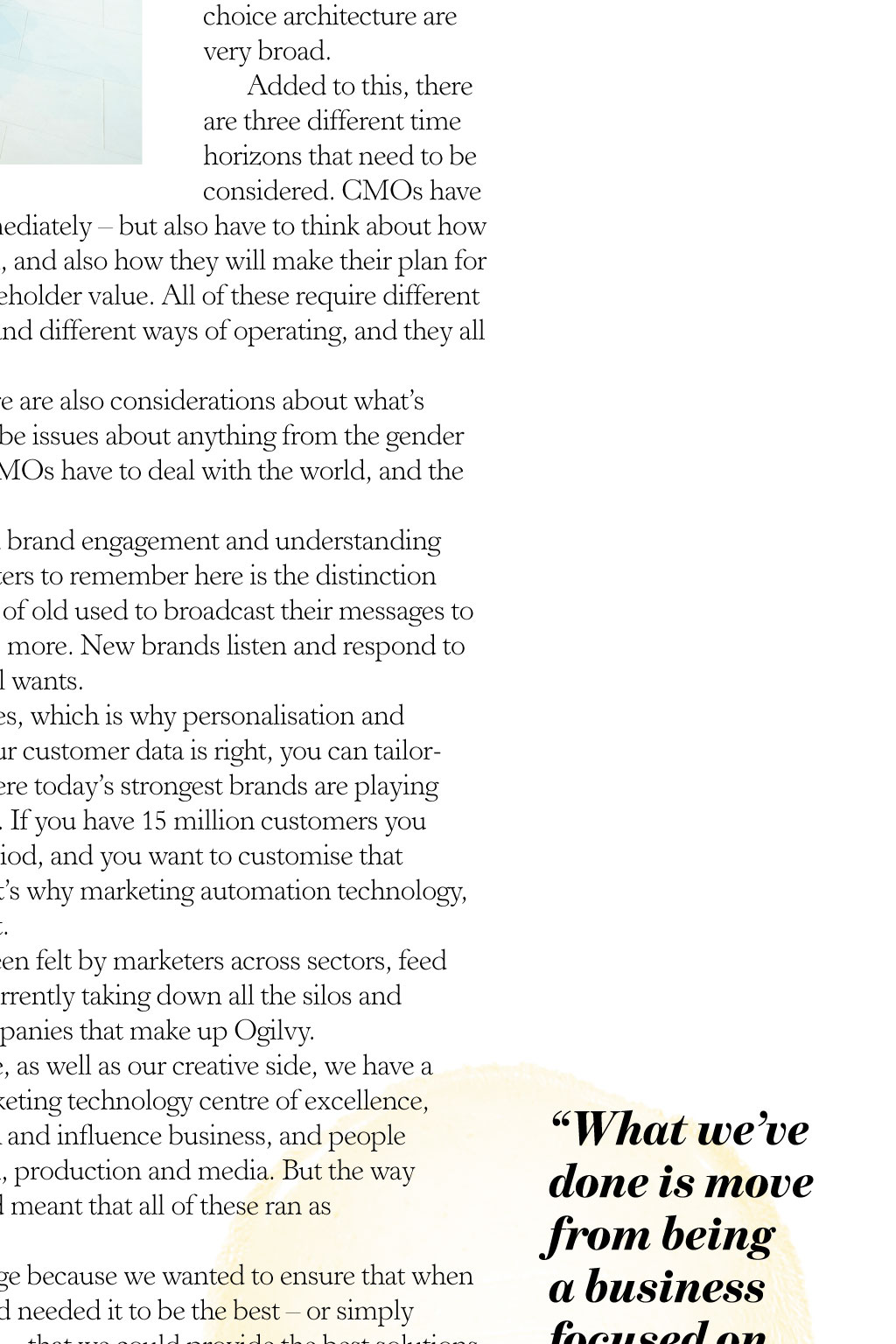
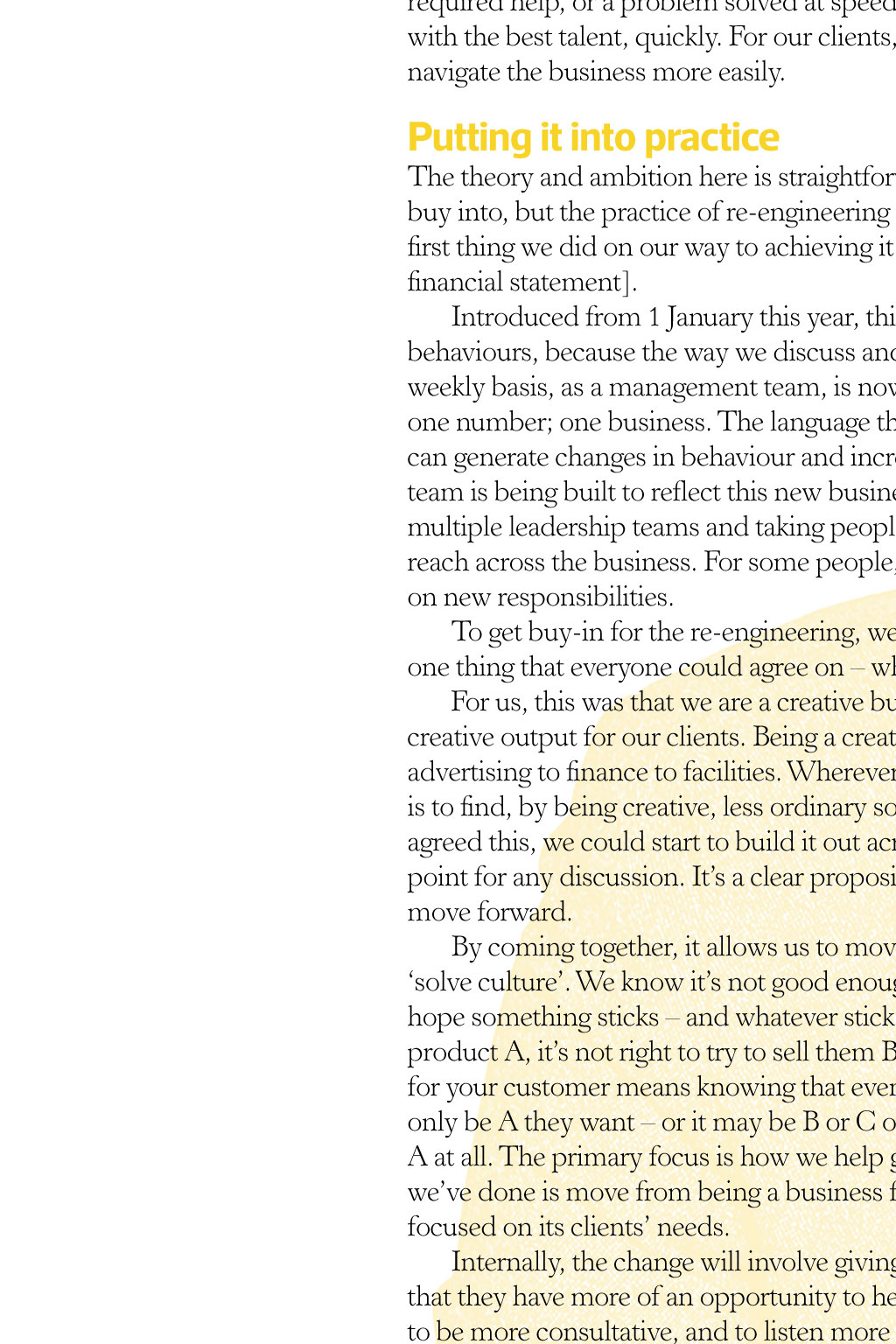
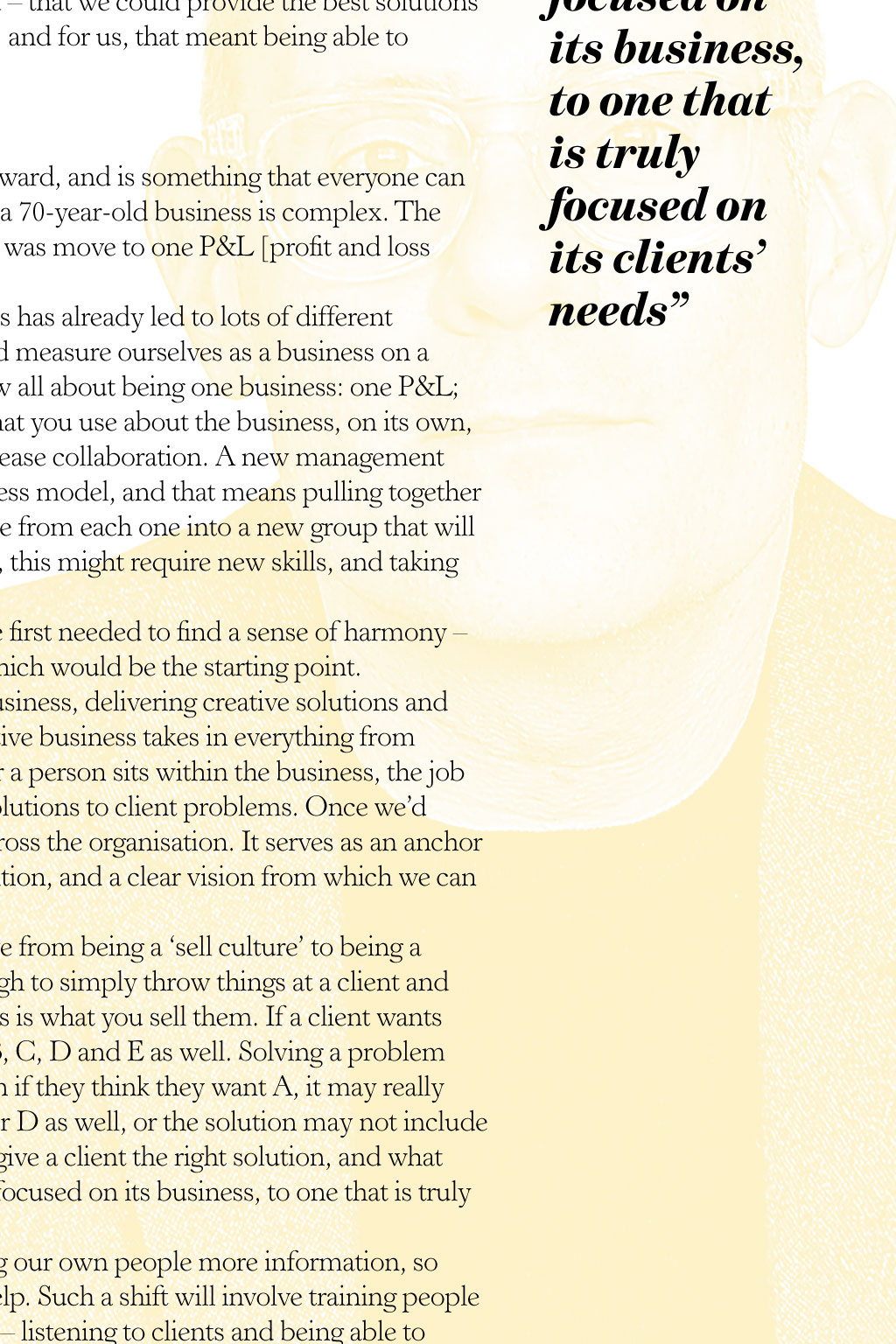
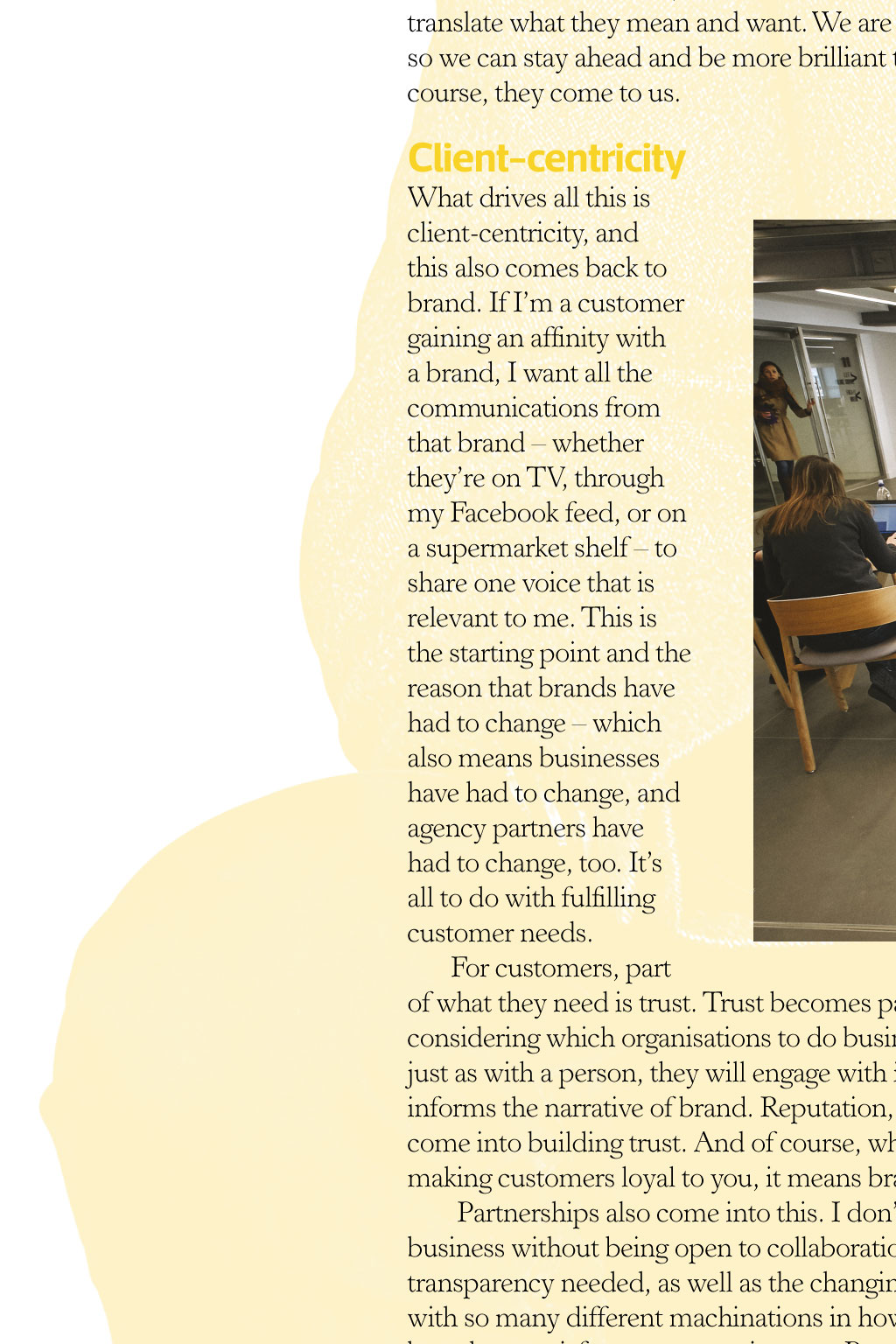
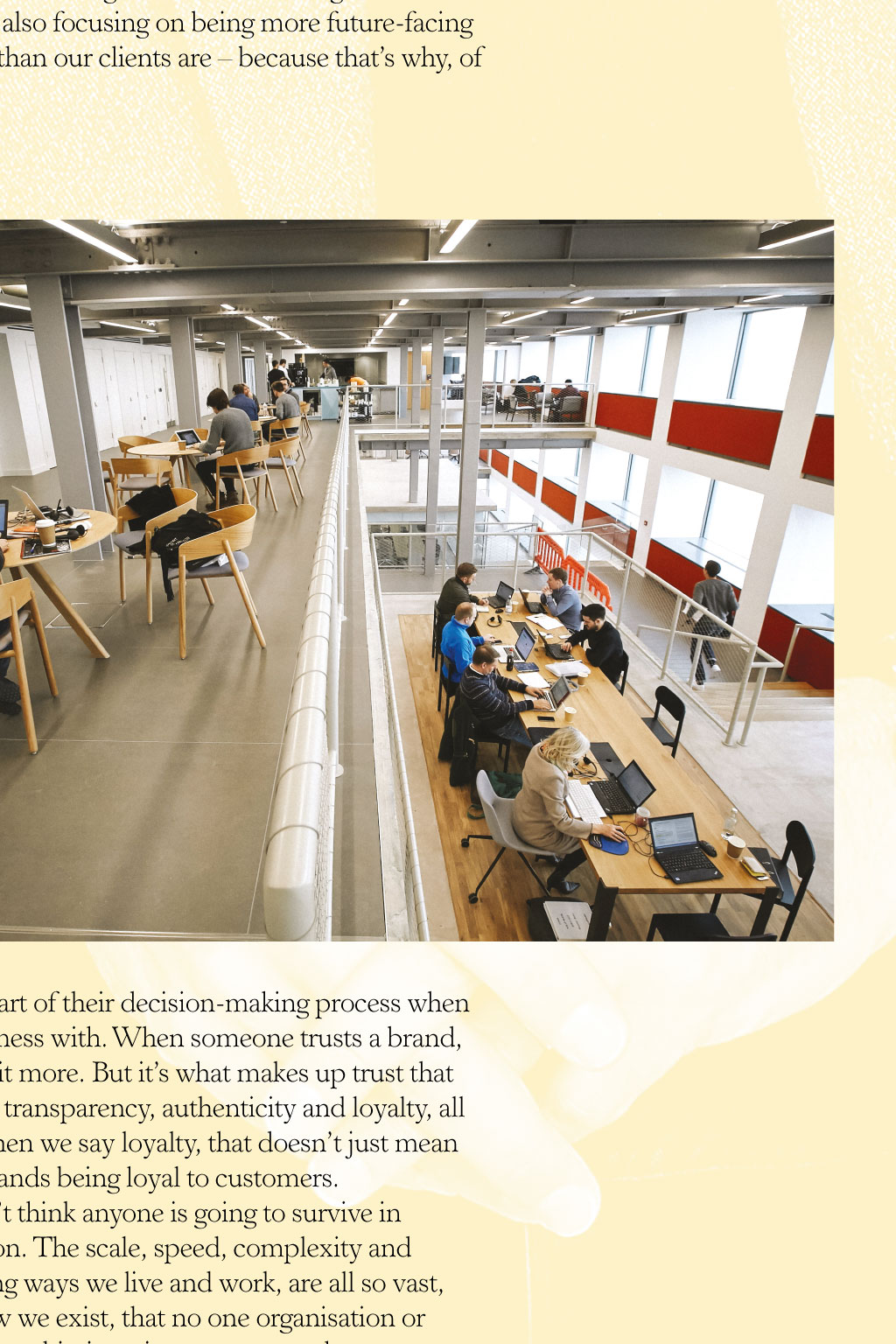
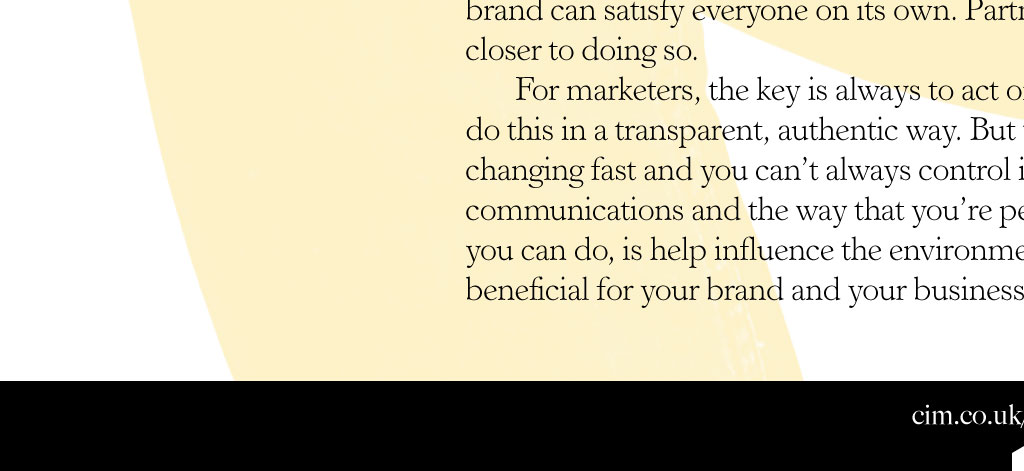














Senior leadership Built for change In February, former PR chief Michael Frohlich stepped up to the position of UK CEO at Ogilvy. His immediate challenge was to help direct the radical organisational transition that has seen Ogilvys distinct global brands consolidated and relaunched as a single integrated operating company. He tells Catalyst about the real-world drivers that made the rebrand necessary, and how the re-engineering will help marketing effectiveness Michael Frohlich, UK CEO of the newly rebranded Ogilvy A lot has changed in the business world, much of it due to advances in technology. With technology, change happens a lot more quickly than its ever happened before. From a business perspective, staying ahead of the game becomes more difficult. Meanwhile, the business services industry the trusted advisers that support commercial organisations need to be even further ahead of the game. In brand world its the same. But theres a double whammy, too, in the shape of transparency. Theres now a huge imperative for business to really understand transparency to stop talking about it, and actually do it. The meaning of brand new structure Brand has become a really important badge for consumers to understand what a business is about. A true brand is a representation of a businesss DNA, its ethos, its outlook, and its view on the world. Its the thing customers build an affinity with and loyalty towards, and it is more important than ever. Brand still simplifies choice, as it always did. However, the consumer decisionmaking process, and the presentations of choice they are engaged with, have changed substantially in recent years. There are so many more factors that consumers can consider, including the number of channels, and the places where they can interface with brands. To cut through, a brand has to be able to stand for something and deliver far more information to consumers than it ever used to. Reaching consumers with this increased number of choice cues now goes beyond rational and straightforward communications communications may need to be emotionally charged as well. Given the complexity of the landscape, the ways that a brand can feed into a persons emotional choice architecture are very broad. Added to this, there are three different time horizons that need to be considered. CMOs have to generate revenue drivers for today immediately but also have to think about how they can plan for the next quarter or season, and also how they will make their plan for the longer term, to increase brand and shareholder value. All of these require different elements of execution, different channels, and different ways of operating, and they all need to be done at the same time. For the businesses that run brands, there are also considerations about whats going on out in the real world. This could be issues about anything from the gender pay gap to Brexit, but they all affect how CMOs have to deal with the world, and the brands place in it. The power and strength of brand and brand engagement and understanding is paramount today. One thing for marketers to remember here is the distinction between old brand and new brand. Brands of old used to broadcast their messages to consumers; in the new world, they must do more. New brands listen and respond to every individual in a way that the individual wants. Of course, this adds further complexities, which is why personalisation and data-driven creativity is so important. If your customer data is right, you can tailormake your communication and thats where todays strongest brands are playing well. This is also difficult to achieve at scale. If you have 15 million customers you need to communicate with, within a set period, and you want to customise that communication, its very difficult andthats why marketing automation technology, which is still a growing area, is so important. All of these changes, which will have been felt by marketers across sectors, feed into why Ogilvy is changing, too. We are currently taking down all the silos and barriers between the various operating companies that make up Ogilvy. Were fortunate because, as well as our creative side, we have a strong data platform, a marketing technology centre of excellence, customer engagement, a PR and influence business, and people working in branding, design, production and media. But the way the company was structured meant that all of these ran as individual businesses. We needed this to change because we wanted to ensure that when a client needed something immediately, and needed it to be the best or simply required help, or a problem solved at speed that we could provide the best solutions with the best talent, quickly. For our clients, and for us, that meant being able to navigate the business more easily. Putting it into practice The theory and ambition here is straightforward, and is something that everyone can buy into, but the practice of re-engineering a 70-year-old business is complex. The first thing we did on our way to achieving it was move to one P&L [profit and loss financial statement]. Introduced from 1 January this year, this has already led to lots of different behaviours, because the way we discuss and measure ourselves as a business on a weekly basis, as a management team, is now all about being one business: one P&L; one number; one business. The language that you use about the business, on its own, can generate changes in behaviour and increase collaboration. A new management team is being built to reflect this new business model, and that means pulling together multiple leadership teams and taking people from each one into a new group that will reach across the business. For some people, this might require new skills, and taking on new responsibilities. To get buy-in for the re-engineering, we first needed to find a sense of harmony one thing that everyone could agree on which would be the starting point. For us, this was that we are a creative business, delivering creative solutions and creative output for our clients. Being a creative business takes in everything from advertising to finance to facilities. Wherever a person sits within the business, the job is to find, by being creative, less ordinary solutions to client problems. Once wed agreed this, we could start to build it out across the organisation. It serves as an anchor point for any discussion. Its a clear proposition, and a clear vision from which we can move forward. By coming together, it allows us to move from being a sell culture to being a solve culture. We know its not good enough to simply throw things at a client and hope something sticks and whatever sticks is what you sell them. If a client wants product A, its not right to try to sell them B, C, D and E as well. Solving a problem for your customer means knowing that even if they think they want A, it may really only be A they want or it may be B or C or D as well, or the solution may not include A at all. The primary focus is how we help give a client the right solution, and what weve done is move from being a business focused on its business, to one that is truly focused on its clients needs. Internally, the change will involve giving our own people more information, so that they have more of an opportunity to help. Such a shift will involve training people to be more consultative, and to listen more listening to clients and being able to translate what they mean and want. We are also focusing on being more future-facing so we can stay ahead and be more brilliant than our clients are because thats why, of course, they come to us. Client-centricity What drives all this is client-centricity, and this also comes back to brand. If Im a customer gaining an affinity with a brand, I want all the communications from that brand whether theyre on TV, through my Facebook feed, or on a supermarket shelf to share one voice that is relevant to me. This is the starting point and the reason that brands have had to change which also means businesses have had to change, and agency partners have had to change, too. Its all to do with fulfilling customer needs. For customers, part of what they need is trust. Trust becomes part of their decision-making process when considering which organisations to do business with. When someone trusts a brand, just as with a person, they will engage with it more. But its what makes up trust that informs the narrative of brand. Reputation, transparency, authenticity and loyalty, all come into building trust. And of course, when we say loyalty, that doesnt just mean making customers loyal to you, it means brands being loyal to customers. Partnerships also come into this. I dont think anyone is going to survive in business without being open to collaboration. The scale, speed, complexity and transparency needed, as well as the changing ways we live and work, are all so vast, with so many different machinations in how we exist, that no one organisation or brand can satisfy everyone on its own. Partnership is an important way that we can get closer to doing so. For marketers, the key is always to act on what you say youre going to do, and to do this in a transparent, authentic way. But you also need to accept that the world is changing fast and you cant always control it. The more that you try to control your communications and the way that youre perceived, the harder it becomes. What you can do, is help influence the environment in which you operate to make it more beneficial for your brand and your business. cim.co.uk/exchange what weve done is move from being a business focused on its business, to one that is truly focused on its clients needs